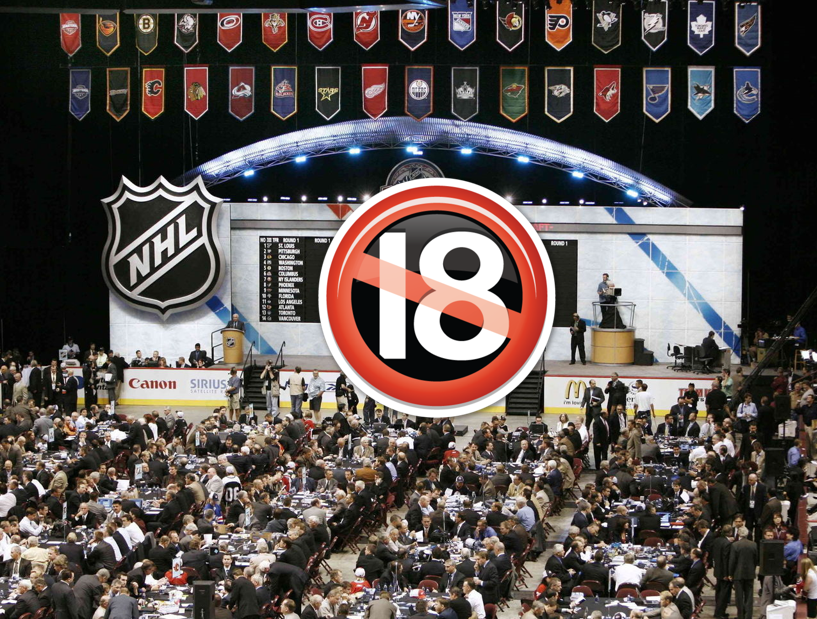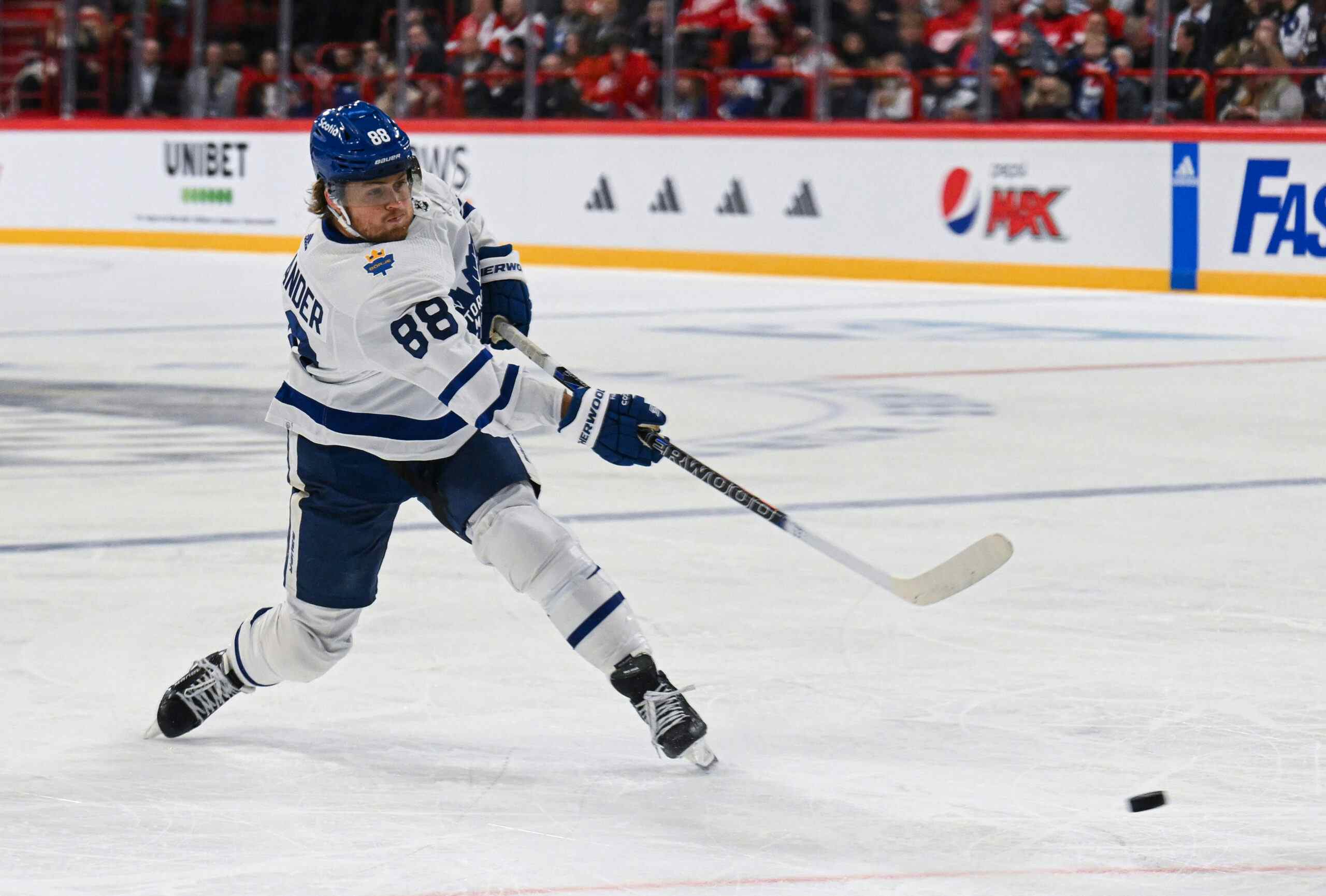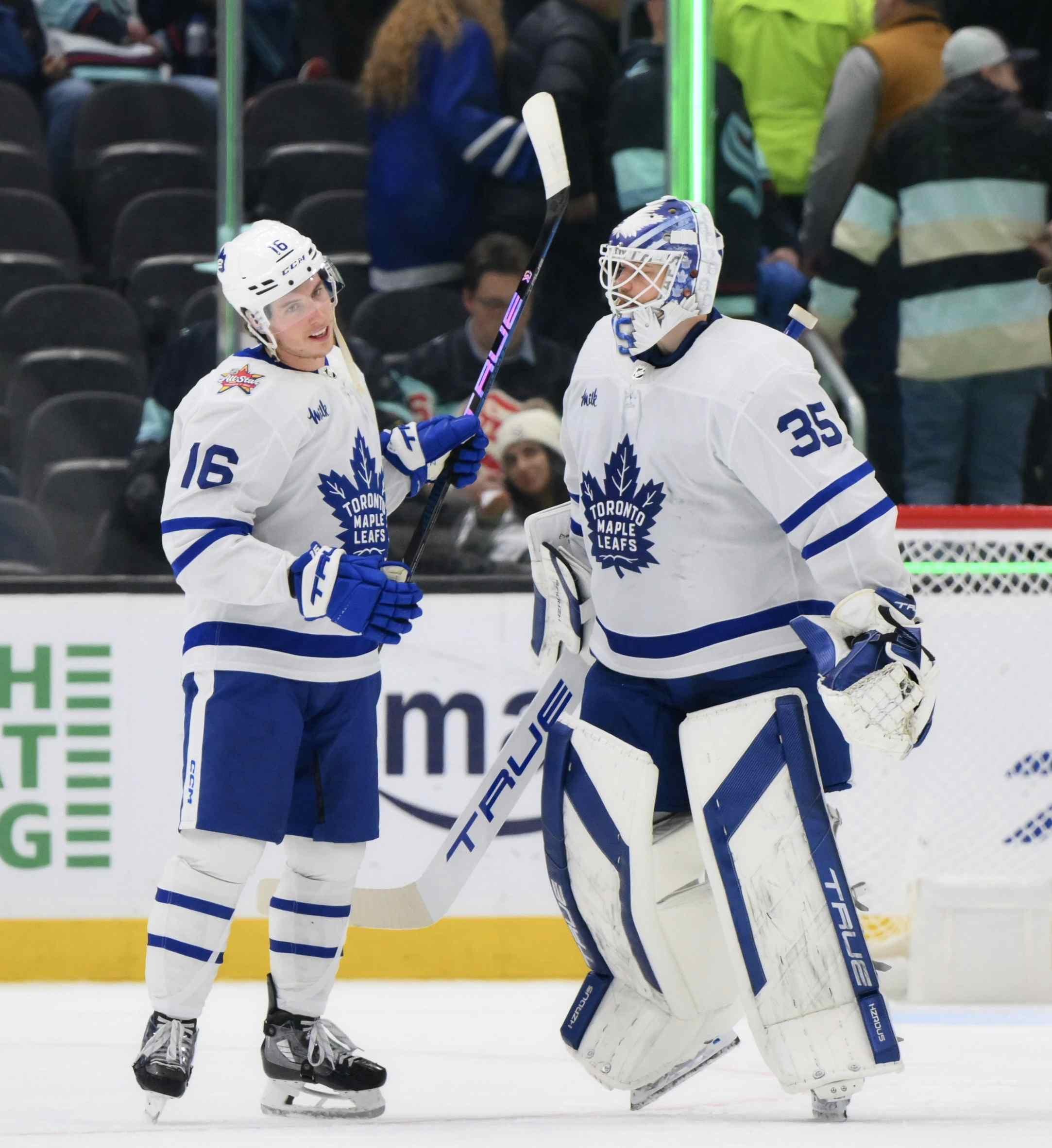What Moving the Draft Age to 19 Could Mean

By Jon Steitzer
6 years agoIt’s September. We haven’t seen hockey in months. One of the furthest hockey things away from now in the Entry Draft, so it makes sense that we talk about that, right? Sorry, it’s happening. The draft is interesting, and what’s even more interesting is the idea that the NHL could move the draft age from 18 to 19, as per their recent Declaration of Principles.
“I think if you live the principals in which we believe in, and we all just signed to support, we have to look at ‘Is what we’re doing in the draft the right thing for age-appropriate (development)? And would an older draft be beneficial for the well-being of our game?”’ LaFontaine said in an interview. “That’s the question we have to ask ourselves. And I think when we look at it – you look at the way hockey is today – relieving maybe some of that pressure and pushing the dial of development to the right on all levels would benefit the experience (of players and their families).”
As a fan of things that throw curveballs at a league that loves the status quo, I’m a big fan of this, but I think it’s worth looking at some of its biggest challenges. As much as I enjoy the idea of this happening, I can’t imagine we’ll see it before the next CBA. That being said, now that it’s out there, I fully expect the 19 year old draft to be NHL reality after the CBA ratification/lock out. At this point there is literally no information about this, so indulge me as I speculate about what this could look like.
NHL vs. NHLPA
Since I’ve said “CBA” a few times already it stands to reason that the biggest hurdle in the 19 year old draft becoming a reality is the NHLPA. The Players Association has generally come around to the NHL’s wishes on every major battle so far, and there’s no reason to believe this will be any different, but it’s unlikely that the NHLPA will hand this to the NHL in advance of the next bargaining session. It could vary depending on how the NHL plans to transition to the 19 year old draft, but with the union relying on the draft as a way of growing its membership base, cancelling the draft for a year or holding an abbreviated draft for 19 year olds would shrink the PA’s membership growth.
On the other side of that. It’s entirely possible that a year without a draft, or a watered down draft supply results in more NHLPA members retaining their NHL jobs for another season, and a year of job security could be a selling point to members. It’s hard to imagine the numbers being big enough either way to matter to the PA, and it might just be a matter of wanting to dig in their heels and making the NHL concede something to them in order to get what the league wants. I know if I were in their situation that’s probably the way I’d play it out.
The biggest sticking point would probably be unrestricted free agency. The league would see this as eliminating 26 year old unrestricted free agents, where I can’t see the NHLPA embracing anything that pushes back that age any further. Along with that I wonder what becomes of the entry level slide contract. Changing it to two years could both help and hurt the players, taking away guaranteed contracts for the lesser players, but allowing higher end players to renegotiate sooner.
The other sticking point for this would be NHL Lottery Teams. The Leafs and Oilers chose the right time to stop being bad because teams like the Canucks could suffer the horrible fate of winning the lottery one season only to chose from leftovers from the previous draft or to go without completely. Suddenly drafting Yakupov first overall doesn’t seem like the worst outcome possible.
I’d be curious to see what concessions the league is able to provide these teams, there really isn’t much they can put on the table. My brain always goes back to compliance buyouts being a peace offering, but again that brings you back to seeking NHLPA approval in order to make something happen and they generally don’t like to put their players out of work.
Transitioning to the New Draft
Here are the transition options as I see them at this point:
- Wait until the CBA expires and cancel the draft. The CBA expires in 2022, but either side can elect to termination the collective agreement by September 2020. So let’s assume we’re talking about 2020. Given the beefing over the Olympics it’s not a stretch. Since the collective agreement expires in September, we’d probably see the 2021 draft cancelled to accommodate the move to drafting 19 year olds. This works because it’s easy for the league and it only screws over the fans, and the NHL has never hesitated to screw over their fans. The bonus here is that if the whole season has been locked out, the lottery teams have already had a draft that rewarded their poor performance.
- Cancel the draft, assuming the transition to 19 happens before the CBA is ratified. This is where I’m curious about the compensation for lottery teams. Do you reward them with additional picks to start the second round of the following year? Do you give them some financial compensation? Yeah, you probably do that since it benefits the owners and not the fans of the teams. I’m realizing now I’m very jaded about how this is going to play out.
- An abbreviated draft. I wouldn’t see this being any different if it happens before or after the CBA, but it speaks to the fact that you’re selecting from a group that has already been passed over in one draft, and having teams pick a full seven rounds might seem excessive. Just for fun, I decided to see what the first round of a 19 year old draft would look like if it happened next season. I don’t hate it as much I thought I would, but the draft certainly won’t be deep.

- A full draft of 19 year olds. Who cares that it’s excessive? Teams still need to stock up and they’ll get their opportunity to do it here. All of a sudden NCAA and KHL scouting seems like it a priority over junior here. Pretty much all of these options seem to hurt the lottery teams, so…
- Allow teams to pick 18 year olds in the first round for a couple of years to do a slower transition. Lottery teams still receive their reward for being bad, and it gives a bit of time to build up a worthwhile 19 year old class. Maybe even follow the junior draft model and allow for players to apply for exceptional status as 18 year olds, where they can be drafted as long as it is to stay with their NHL team. This is the compromised version, but I still wouldn’t expect to see it before the next CBA.
Junior Hockey Impact
Well, I guess we’ll be hearing a lot less about the USHL, and Canadian Junior-A teams as most of their draft eligible players will be off to college before the draft now. That’s not to say their product will be worse, but the audience that tunes in exclusively for following draft eligible players will be gone. On the plus side for them, they may see an increased caliber of talent as more players may opt for the NCAA route given the later date age being less of a time commitment on the NHL when players going the full four years of school.
The CHL/NCAA may see a slight bump in interest given the improved product that will exist in these leagues once there is an additional year of high caliber play, but again, the draft fans aren’t going to shift on CHL they are generally already there, but there might be some growth for the NCAA.
There’s also the potential that we’ll see more players choosing to go the Auston Matthews route, and go play a year in Europe to get some money as well as experience playing against professional players. That could be an unfortunate circumstance for the CHL, but not a surprising one given the lack of pay.
Finally, the World Junior Hockey Championship will be a much more significant draft event than before, and it will be a lot less about fans tuning in to see how the prospect their team drafted is doing. As a draft fan, I’d say this benefits the tournament, but I think overall it might be a decline in audience as people don’t have players they are invested in, again an audience impact that ripples throughout junior hockey.
It probably is in the best interest of junior and college hockey to have better standalone products absent of what players are NHL bound, and this does that, so in that way it’s a win for the leagues. They will likely win again when the NHL and NHLPA negotiate to bring this into their next CBA and get a ton of eyes on their product during the next lockout.
Overall…
This is something that is worth paying attention to, as it will have a significant impact on the league. I find myself in favour of this move for a couple of reasons, the first one I’ve touched on at length: it’s something interesting. The second one is because it does right by the players. It’s one more year removed from taking kids from their homes, drafting them into a new city, and establishing their careers as teenagers. This doesn’t eliminate any of the heavy restrictions placed on a player as far as having to report where they are told and being locked into a long term relationship with that team until they reach unrestricted free agency, but I guess there’s comfort in it not happening to high school kids.
Given the increased number of overagers taken in the draft, it’s becoming clear that the NHL is wanting to take a longer look at prospects when they can. It’s no longer surprising when the player you can’t believe was passed on in the previous draft is a second round pick the following year. It shouldn’t hurt the NHL draft as much I may have portrayed it above.
I feel like this is only scratching the surface of a topic that has many moving parts to it and has an impact across every junior and professional league in hockey. Ultimately it feels like the league will head in this direction, but it seems like we’ve got at least three years before we’ll have to deal with it. Until then, the status quo prevails.
Recent articles from Jon Steitzer





